Table of Contents
Have you ever marveled at the breathtaking beauty of colorful birds? These avian wonders, with their vibrant plumage and stunning hues, seem to capture our attention effortlessly. In this article, we delve into the captivating world of colorful birds, exploring their beauty, diversity, and the incredible array of species that adorn our skies. From the Scarlet Macaw’s vivid reds to the Lilac-breasted Roller’s breathtaking palette, join us on this article to discover the magic of these feathered gems.

Scarlet Macaw
The Scarlet Macaw, native to the South American rainforests, is a stunning spectacle of red, blue, and yellow feathers. Its vibrant colors make it one of the most iconic and recognizable parrots in the world of colorful birds. These intelligent birds are not only beautiful but also possess a remarkable ability to mimic human speech.

Rainbow Lorikeet
Found in Australia, the Rainbow Lorikeet lives up to its name with a kaleidoscope of colors adorning its plumage. Sporting hues ranging from vivid blues and greens to fiery oranges and reds, these social birds bring a burst of color to their natural habitat.
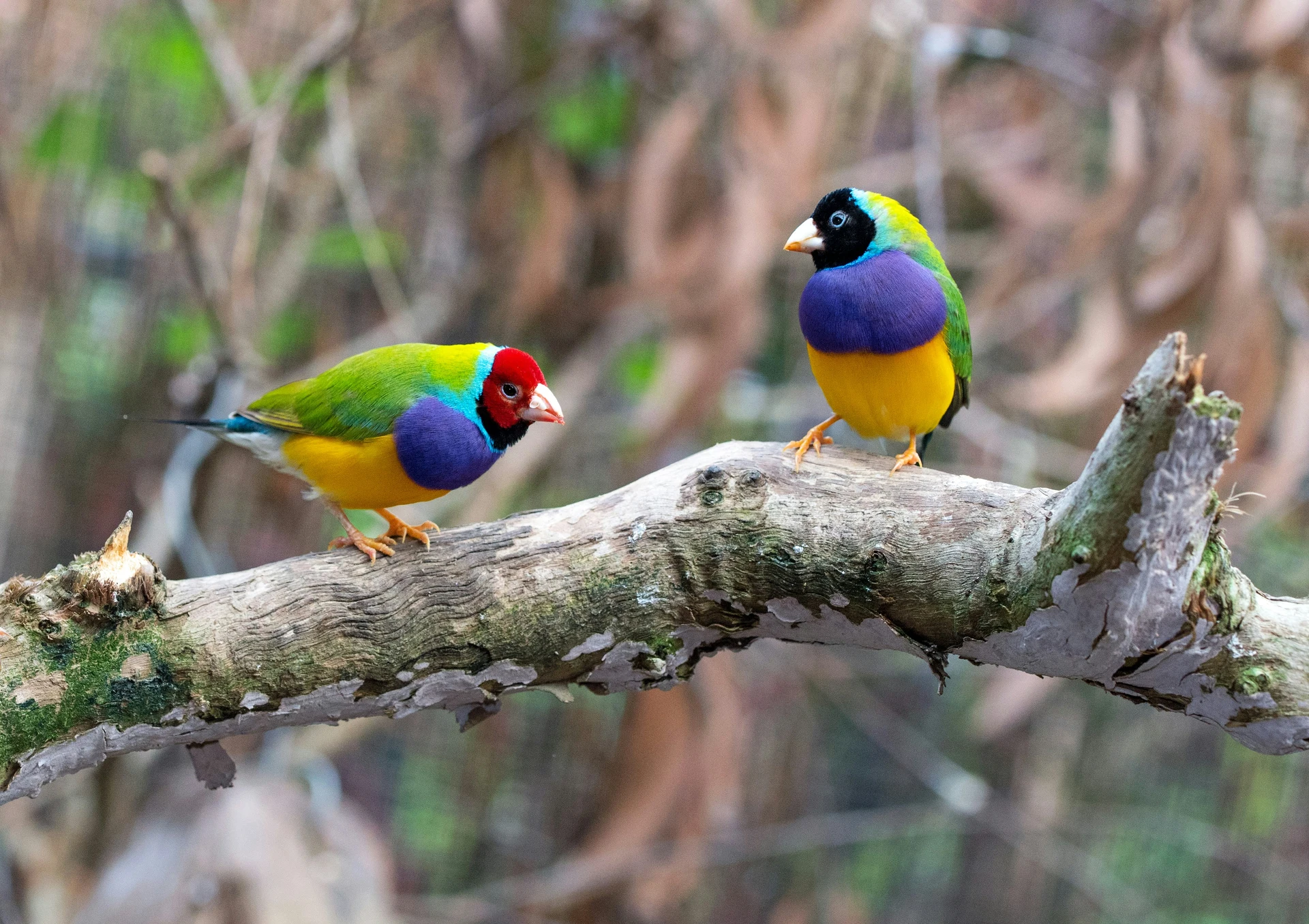
Gouldian Finch
The Gouldian Finch, also known as the Rainbow Finch, is a small but spectacular bird found in northern Australia. Its colorful feathers come in a variety of vibrant shades including red, yellow, green, and black. Sadly, due to habitat loss and illegal trapping, these colorful birds are facing endangerment.

Keel-billed Toucan
With its oversized and brightly colored bill, the Keel-billed Toucan is a symbol of tropical forests in Central and South America. Its plumage features a blend of green, blue, red, and yellow, making it a striking sight amidst the lush canopy.

Atlantic Puffin
Nesting along coastal cliffs in the North Atlantic, the Atlantic Puffin may appear clown-like with its vibrant beak, but its colorful markings extend to its sleek black and white body. These charming seabirds are a delight to behold, especially during the breeding season when their colors intensify.

Mandarin Duck
The Mandarin Duck, native to East Asia, is celebrated for its elaborate and ornate plumage. Its striking combination of iridescent greens, blues, purples, and oranges make it one of the most visually captivating waterfowl in the world.
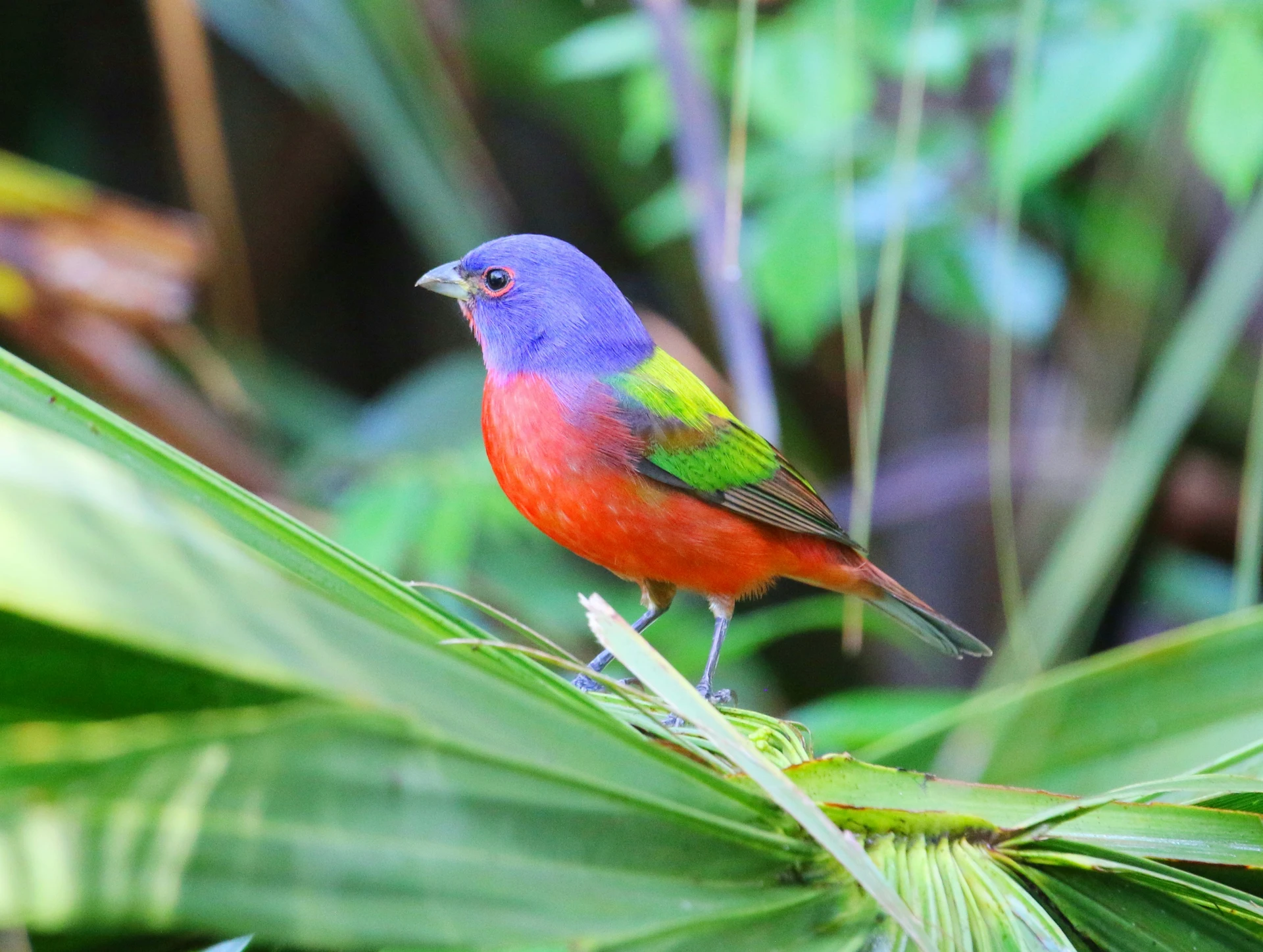
Painted Bunting
Inhabiting the woodlands of North America during the breeding season, the Painted Bunting is a small songbird with an extraordinary palette of colors. Males boast vibrant hues of blue, green, and red, while females exhibit more subdued tones.
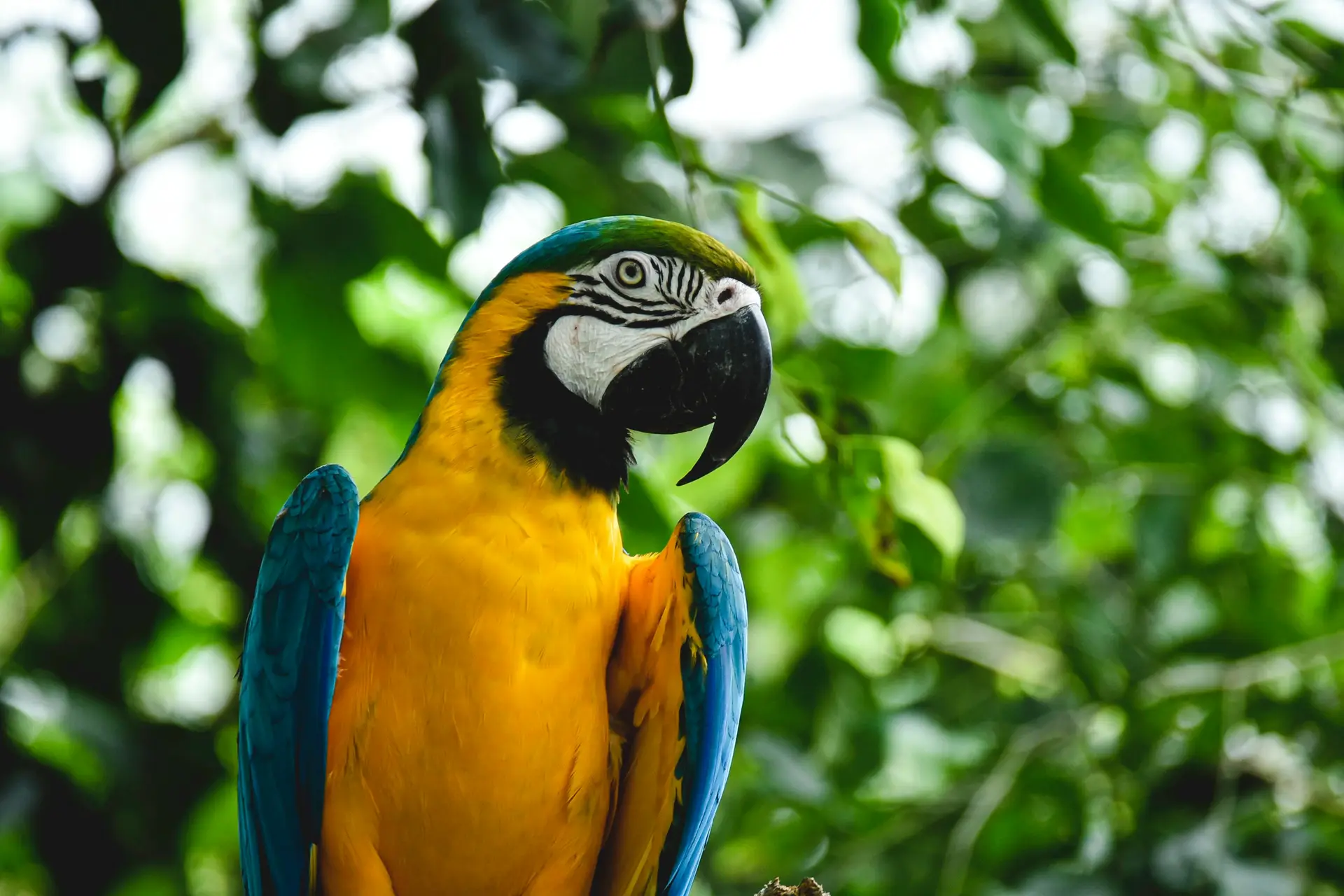
Blue-and-yellow Macaw
Another dazzling member of the macaw family, the Blue-and-yellow Macaw, hails from South America. Its electric blue and vivid yellow feathers create a striking contrast that’s hard to miss, whether soaring through the rainforest or perched on a branch. No wonder it’s one of the most known species when people think of colorful birds.
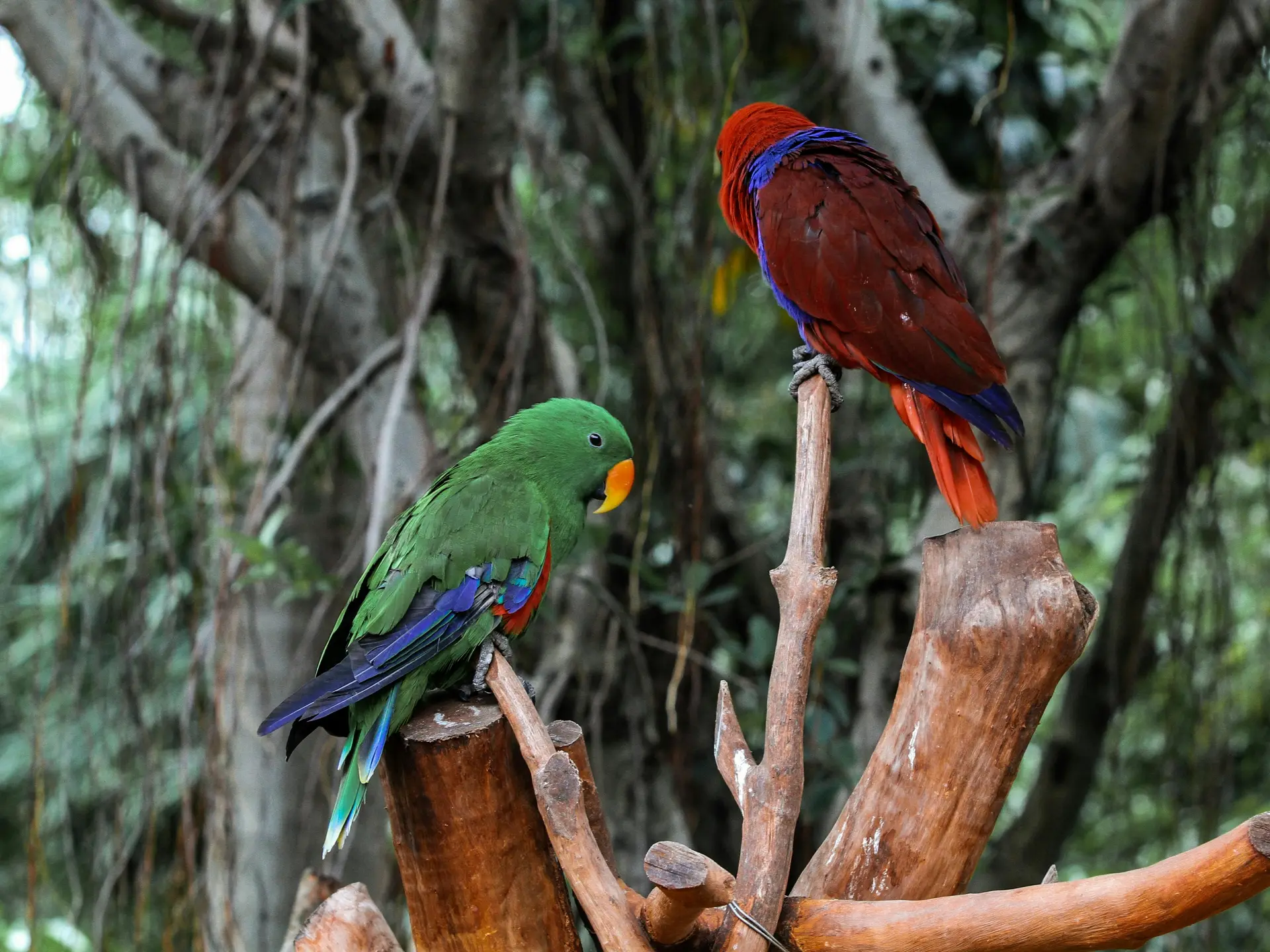
Eclectus Parrot
The Eclectus Parrot, native to the rainforests of the Solomon Islands, is known for its extreme sexual dimorphism. While males flaunt vibrant emerald green plumage, females exhibit stunning hues of red and purple. This unique feature makes them one of the most visually distinct parrot species.
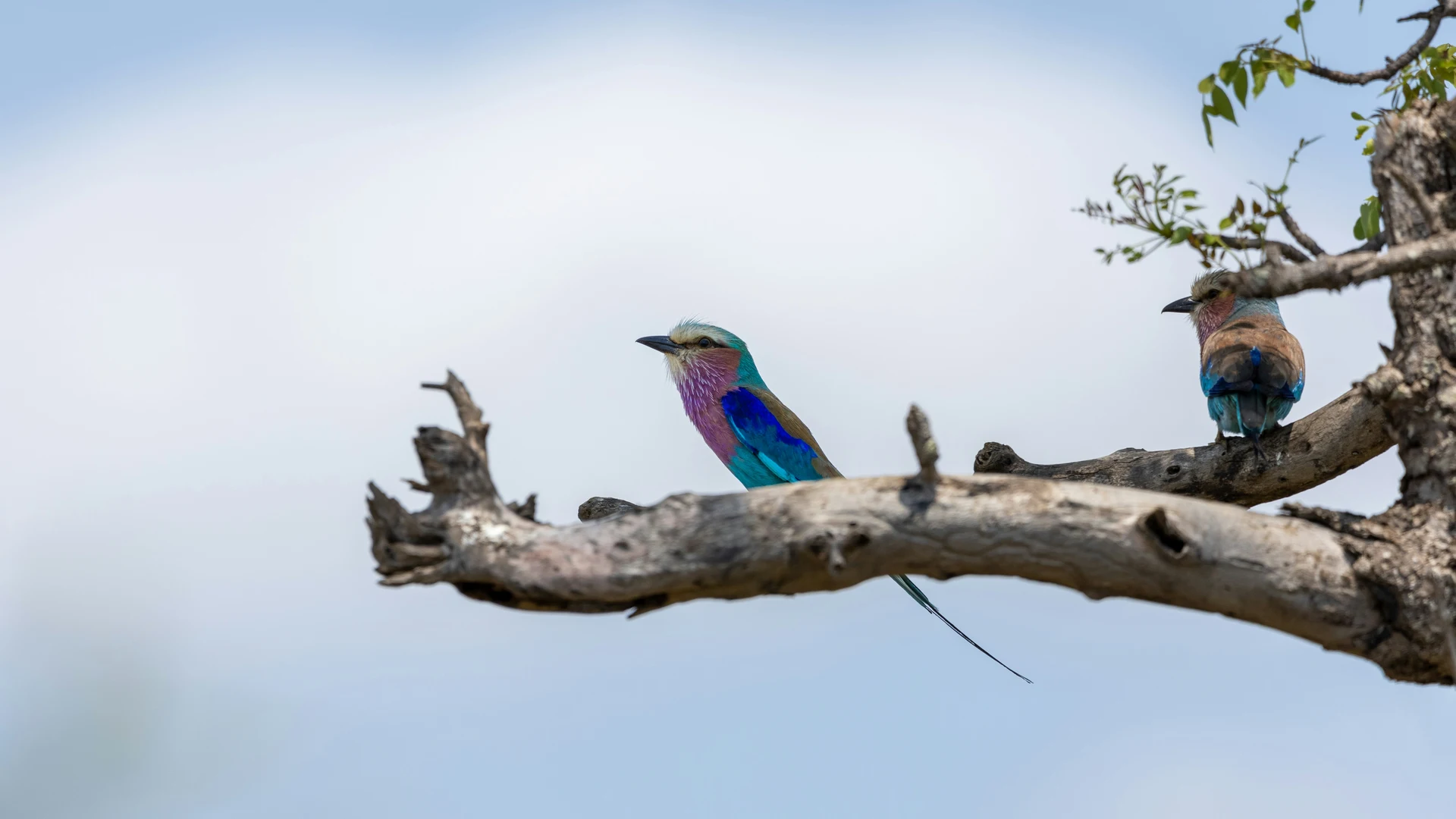
Lilac-breasted Roller
Found in sub-Saharan Africa, the Lilac-breasted Roller is a striking bird with a vibrant array of colors. Its name is derived from its lilac throat and breast feathers, complemented by shades of blue, green, and turquoise. These rollers are renowned for their aerial acrobatics during courtship displays.
These ten colorful birds represent just a fraction of the stunning diversity found in avian species around the globe. Each one showcases nature’s extraordinary artistry, reminding us of the boundless beauty that surrounds us.
Learn More!
Exploring the world of colorful birds is just the beginning of our journey into the fascinating realm of wildlife. Dive deeper into our birds category to discover more avian wonders like these beautiful looking colorful birds. For those intrigued by the mysteries of the animal kingdom, explore our mammals section, where you’ll uncover tales of remarkable creatures from land and sea.
F. A. Q. about Colorful Birds
Why are male birds more colorful?
Male birds are often more colorful than females due to sexual selection. In many bird species, females choose mates based on their appearance, with brighter and more colorful males being perceived as healthier and more genetically fit. This phenomenon drives the evolution of elaborate plumage in male birds as a means of attracting mates and asserting dominance within their species.
Why are birds so colorful?
Birds display a wide range of colors for various reasons, including attracting mates, establishing territory, camouflaging from predators or prey, and signaling social status. Colorful plumage can also serve as a form of communication among birds, conveying information about their health, reproductive status, and genetic fitness.
What birds are colorful?
Numerous bird species exhibit vibrant and colorful plumage, ranging from parrots and toucans in tropical rainforests to puffins and kingfishers in coastal habitats. Some notable examples include the Scarlet Macaw, Rainbow Lorikeet, Gouldian Finch, and Blue-and-yellow Macaw.
Are birds color blind?
While birds have excellent color vision compared to many other animals, not all bird species perceive colors in the same way humans do. Some birds, particularly those that are nocturnal or have primarily monochromatic vision, may have limited color perception. However, many birds possess specialized color receptors in their eyes that enable them to distinguish a wide range of colors, aiding them in tasks such as foraging for food and selecting mates.
Can birds see in color?
Yes, most birds have color vision and can perceive a broader spectrum of colors than humans. Birds typically have four types of color receptors in their eyes compared to the three found in humans, allowing them to detect ultraviolet light and distinguish a wider range of hues. This enhanced color vision plays a crucial role in various aspects of bird behavior, including foraging, mate selection, and predator avoidance.


